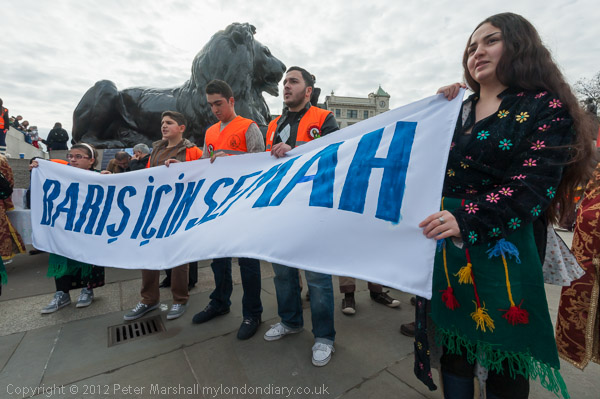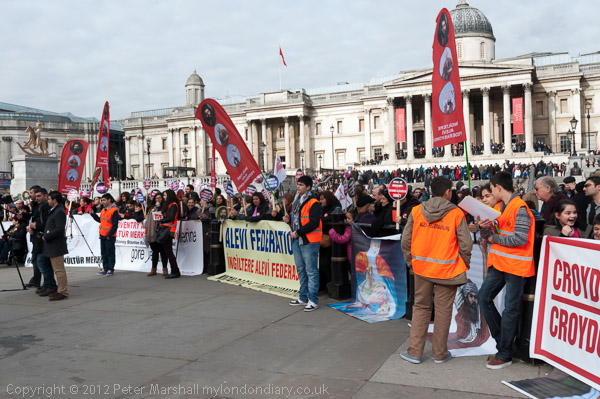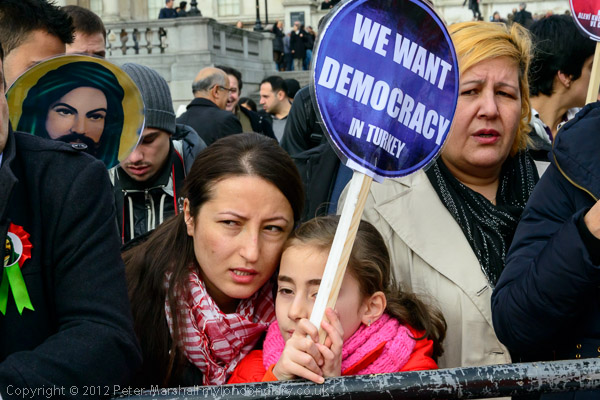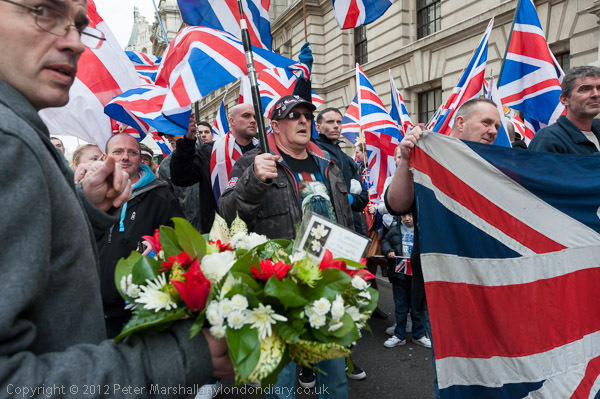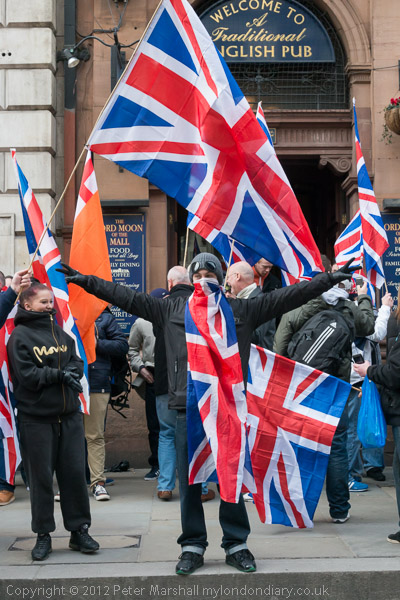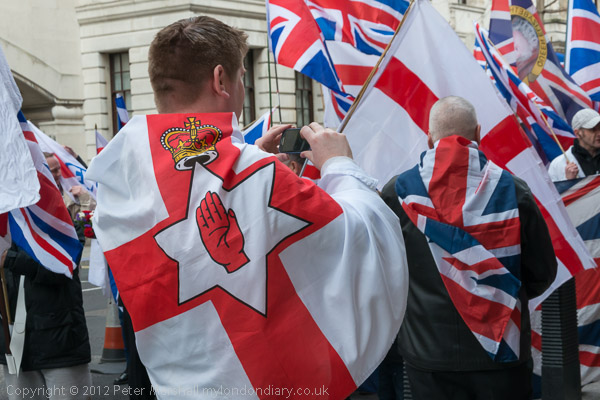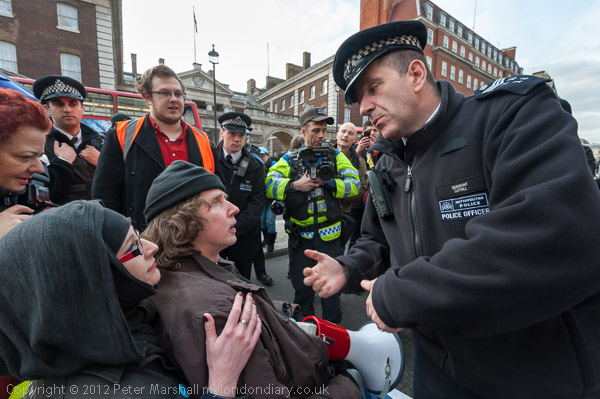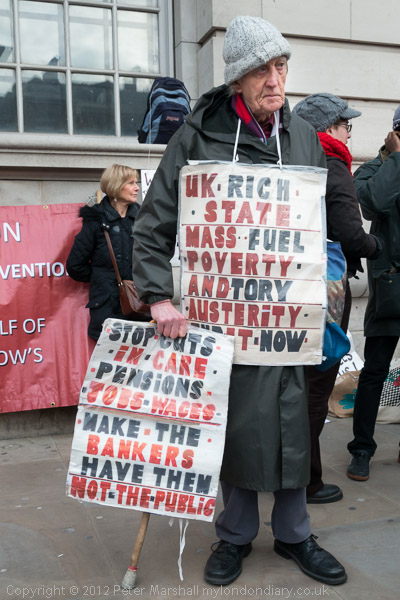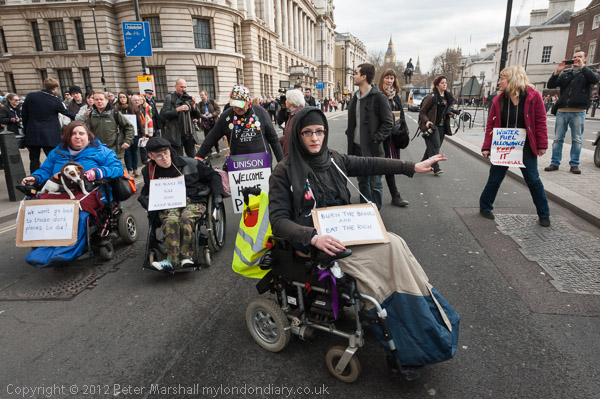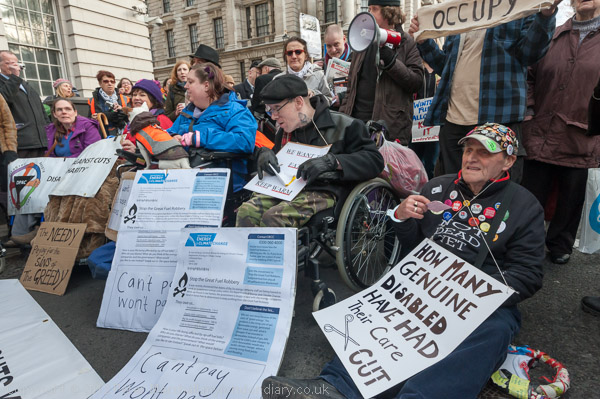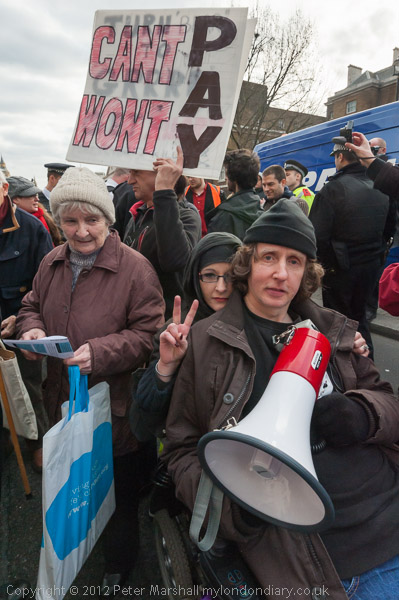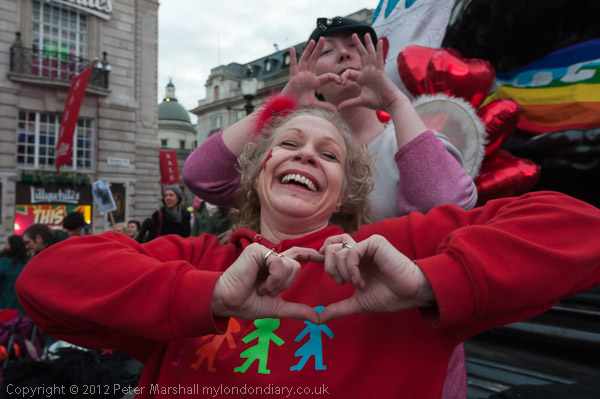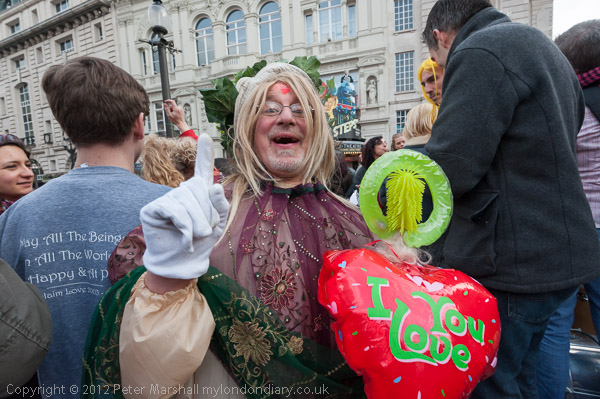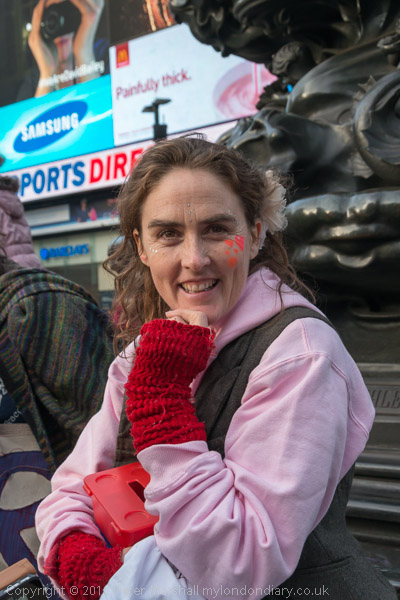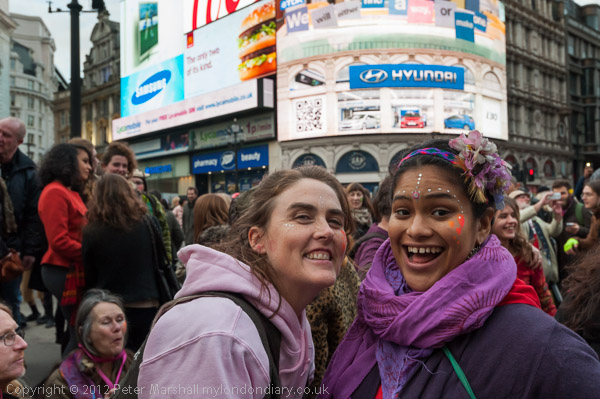9/11 Anniversary – EDL & Extremist Muslims: On Saturday 11th September 2010 the extreme right English Defence League marched to the Grosvenor Square memorial to pay their respects to those killed in the 9/11 terrorist attacks, then stopped briefly at the American Embassy before going on to protest at the Saudi Embassy. Later Anjem Choudary and Muslims Against the Crusades came to hold a protest outside the US Embassy and the EDL returned to protest against them.
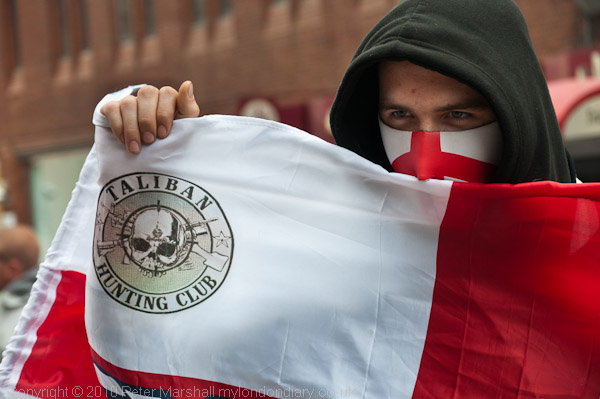
Around 150 EDL supporters met outside a pub close to Bond Street station to march to the 9/11 memorial in Grosvenor Square and posed there for photographers.
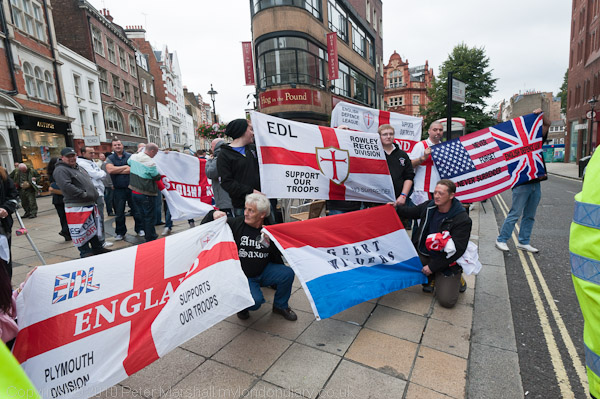
As well as the usual EDL St George’s flags there were also others on display, including one man with both Israeli and Portuguese flags and a Dutch Flag with the name of far-right Islamophobic Dutch politician Geert Wilders. He had been banned from visiting the UK in 2009, but the ban had been overturned on appeal.
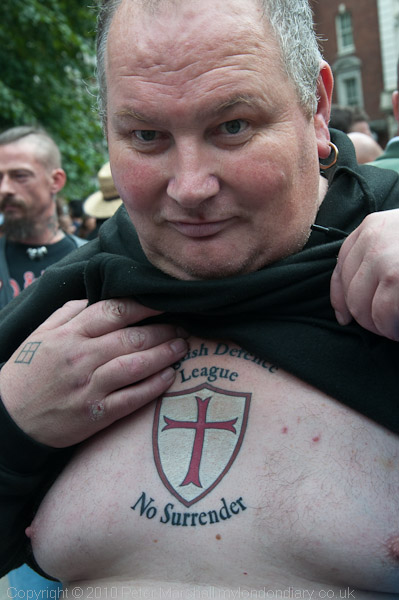
One man proudly told the press that he had put a pigs head on a mosque, and later showed us his tattoos.
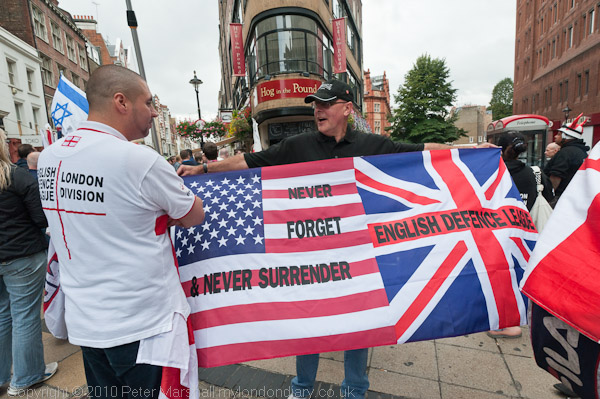
Another flag combined the US Flag and the Union Jack, with the message ‘Never Forget & Never Surrender‘ and some women carried wreaths which were laid at the memorial in Grosvenor Square with a two-minute silence before the marchers moved on for more photographs at the US Embassy.

The EDL the marched to the Saudi Embassy to show their feelings towards a country that is widely seen to have supported Muslim extremists and terrorist groups, including those involved in 9/11.

Here they burnt a number of black A4 sheets with white Islamic text which apparently included the name of Allah. There were also a number of clearly Islamophobic chants, including a blasphemous declaration of paedophilia.
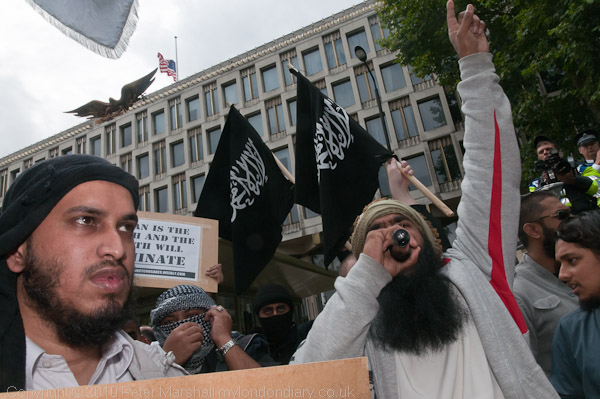
I returned to the US Embassy where Anjem Choudary had arrived to protest with around a hundred extremist Muslims from Muslims Against Crusades.

They had called for the day to be made ‘International Burn The American Flag Day‘ after Florida pastor Terry Jones had threatened to burn a copy of the Qur’an on the anniversary. The regard the US flag as a symbol of unbelief and of war – military, ideological, social and economic – against the Muslim religion.

As I wrote:
“Muslims Against the Crusades (MAC) is widely seen as a successor to Islam4UK, banned in January 2010 and itself regarded, along with Ahl ul-Sunnah Wa al-Jamma (ASWJ) as a thinly veiled reincarnation of the previously banned al-Muhajiroun. Anjem Choudary, a UK born former solicitor was one of this organisation’s founders, and a leader of Islam4UK, ASWJ and MAC.”
The group, described by the Muslim Council of Britain as “a tiny, and utterly deplorable, extremist group” was finally banned in the UK in 2011. I still wonder why they were allowed to continue for so long.

The US flag they had brought proved to be fairly fireproof, although some paper copies and pictures of Pastor Jones burnt more freely, and with copious quantities of lighter fluid it did eventually melt and burn. I was in the front row of the large group of press surrounding the burning and got uncomfortably warm, though fortunately the wind was blowing the toxic smoke away from me.
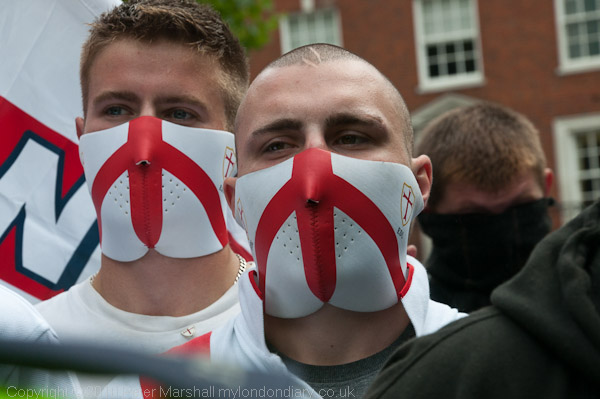
Police had earlier led the EDL away towards Green Park Station, but some had managed to return to the US Embassy to protest against the extremist Muslims. At first they protested from behind the hedge to the Grosvenor Square Gardens and police cleared the area after a beer can was thrown into the centre of the MAC protest – fortunately no one was injured.
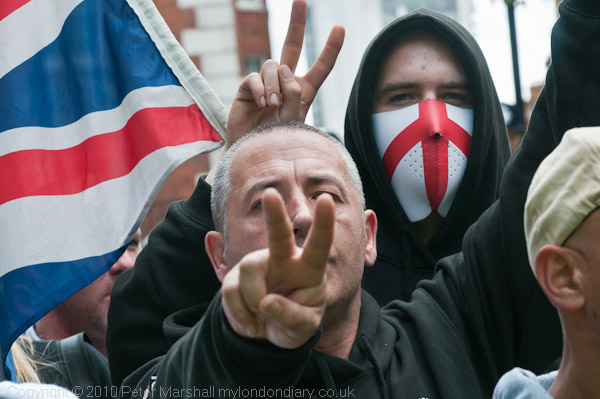
Police moved the EDL to a pen at a safe distance from the extremist Muslims and they continued their protest, shouting insults. The atmosphere was much more angry than in the morning, and at times there were threats made against the press as well as the MAC.
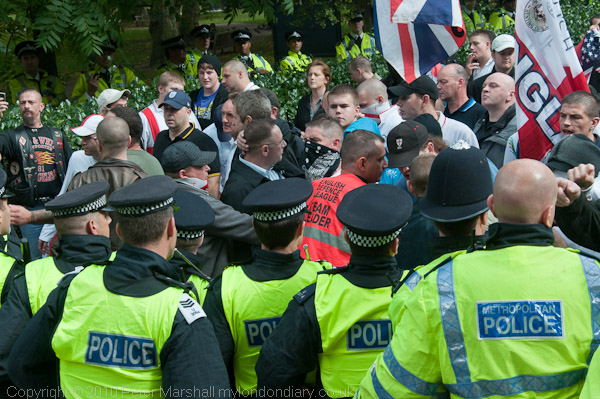
Police managed, with the assistance of some EDL stewards to keep the two groups apart, although I think there were some arrests. When I left an hour or so after the flag burning, police seemed very much in control, holding the EDL back while the MAC protest was continuing.
More on My London Diary:
EDL Remember 9/11
Muslims Against Crusades Burn US Flag
EDL Protest Against MAC
Flickr – Facebook – My London Diary – Hull Photos – Lea Valley – Paris
London’s Industrial Heritage – London Photos
All photographs on this page are copyright © Peter Marshall.
Contact me to buy prints or licence to reproduce.
